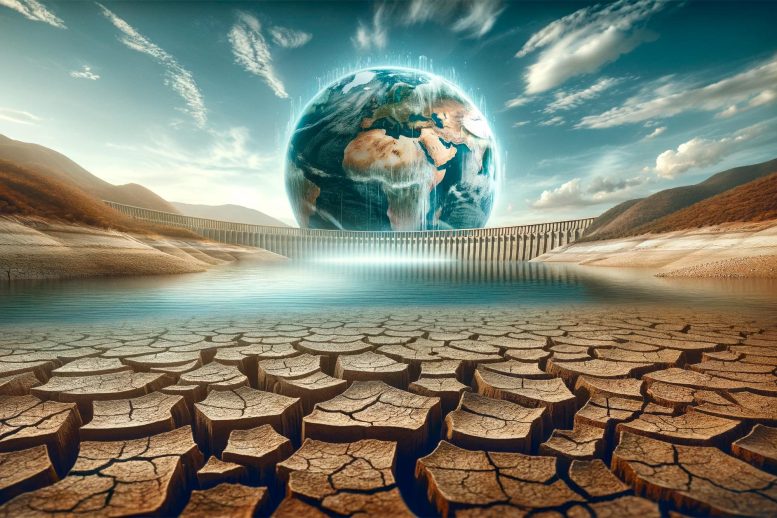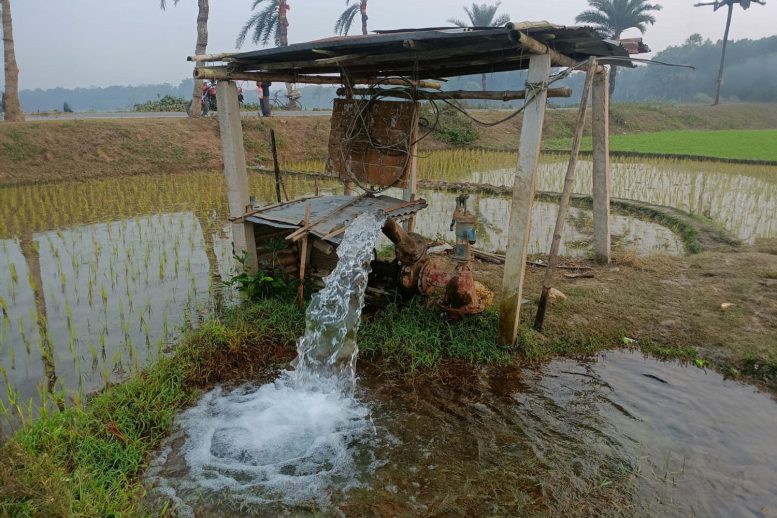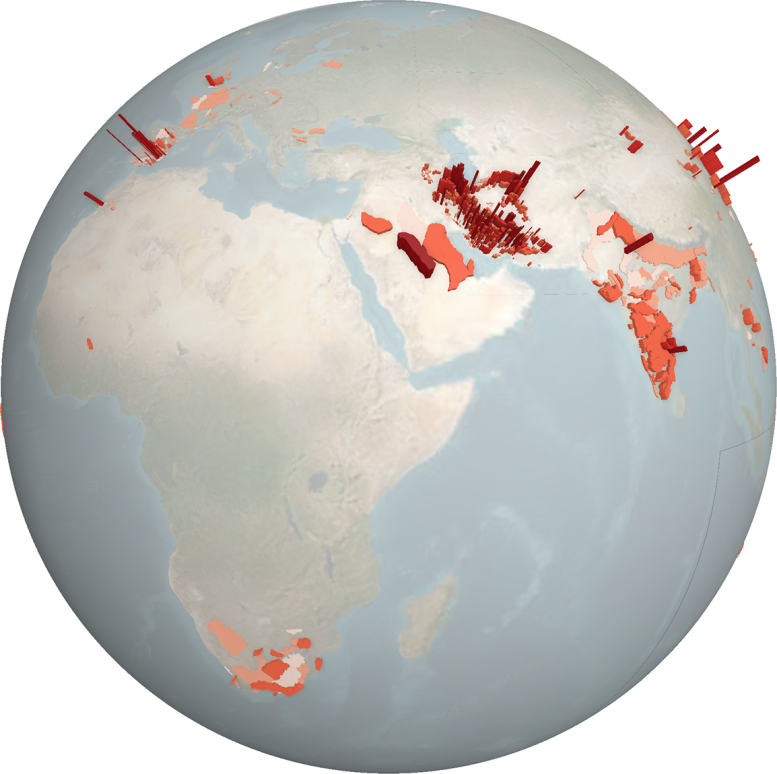
A global crisis is unfolding as countries, including the U.S., excessively pump groundwater, threatening future water security. Research by ETH Zurich and UCSB reveals a sharp decline in groundwater levels exacerbated by agriculture, climate change, and population growth. Despite some successful recovery efforts, urgent global action is needed to address this unsustainable usage and prevent long-term environmental impacts. Credit: SciTechDaily.com
At the beginning of November, The New York Times ran the headline, “America is using up its groundwater like there’s no tomorrow.” The journalists from the renowned media outlet had published an investigation into the state of groundwater reserves in the United States. They came to the conclusion that the United States is pumping out too much groundwater.
But the US isn’t an isolated case. “The rest of the world is also squandering groundwater like there’s no tomorrow,” says Hansjörg Seybold, Senior Scientist in the Department of Environmental Systems Science at ETH Zurich. He is co-author of a study that has just been published in the journal Nature.
Scientific evidence of rapidly depleting water resources
Together with researchers from the University of California, Santa Barbara (UCSB), he has corroborated the journalists’ worrying findings. It is not only in North America that far too much groundwater is being pumped out, but also in other parts of the world where humans have settled.
In an unprecedented feat of painstaking effort, the researchers have compiled and analyzed data from over 170,000 groundwater monitoring wells and 1,700 groundwater systems over the past 40 years.
This measurement data shows that in recent decades, humans have massively expanded groundwater extraction worldwide. The water level in most groundwater-bearing rock layers, known as aquifers, has fallen drastically almost everywhere in the world since 1980. And since 2000, this decline in groundwater reserves has accelerated. The effects are most pronounced in aquifers in the world’s arid regions, including California and the High Plains in the US, along with Spain, Iran, and Australia.

Groundwater-fed irrigation by an electricity-operated pump in southwestern Bangladesh. Credit: Ahmed Ziaur Rahman
“We weren’t surprised that groundwater levels have fallen sharply worldwide, but we were shocked at how the pace has picked up in the past two decades,” Seybold says.
One of the reasons Seybold cites for the accelerated drop in groundwater levels in arid regions is that people use these areas intensively for agriculture and are pumping (too) much of the groundwater to the surface to irrigate crops, for example in California’s Central Valley.
Food cultivation and climate change exacerbate the problem
Moreover, the world’s population is growing, which means more food needs to be produced, for example in the arid regions of Iran. This is one of the countries where groundwater reserves have fallen the most.
But climate change is also exacerbating the groundwater crisis: some areas have become drier and hotter in recent decades, meaning agricultural crops need to be irrigated more heavily. Where climate change is driving a decline in precipitation, groundwater resources recover more slowly, if at all.
Heavy rainfall, which is occurring more frequently in some places as a result of climate change, is also not of any help. If the water comes in huge quantities, the soil often cannot absorb it. Instead, the water drains off at the surface without seeping into the groundwater. This problem is particularly acute in places with a high level of soil sealing, such as large cities.
Trend can be reversed
“The study also reveals good news,” says co-author Debra Perrone. “Aquifers in some areas have recovered in places where there have been policy changes or where alternative sources of water are available for direct use or for recharging the aquifer.”
One of the positive examples is the Genevese aquifer, which supplies drinking water to around 700,000 people in the canton of Geneva and the neighboring French department of Haute-Savoie. Between 1960 and 1970, its level fell drastically because both Switzerland and France were pumping out water in an uncoordinated manner. Some wells even dried up and had to be closed.

The world has a problem: On all inhabited continents, groundwater resources whose levels have fallen to various degrees are marked by light-to-dark red zones. Credit: Scott Jasechko, UCSB
To preserve the shared water resource, politicians and authorities in both countries agreed to replenish the aquifer artificially with water from the Arve River. The intention was first to stabilize the groundwater level and later to raise it – and the intervention was a success. “While the water level in this aquifer may not have returned to its original level, the example shows that groundwater levels don’t always have to go only one way: down,” Seybold says.
Other countries are reacting, too
The authorities have also had to take action in other countries: In Spain, a large pipeline has been built to carry water from the Pyrenees to central Spain, where it feeds the Los Arenales aquifer. In Arizona, water is diverted from the Colorado River into other bodies of water to replenish the groundwater reservoirs – although this does cause the delta of the Colorado River to dry up at times.
“Such examples are a ray of hope,” says UCSB researcher and lead author Scott Jasechko. Nevertheless, he and his colleagues are urgently calling for more measures to combat the depletion of groundwater supplies. “Once heavily depleted, aquifers in semi-deserts and deserts may require hundreds of years to recover because there’s simply not enough rainfall to swiftly replenish these aquifers,” Jasechko says.
There is an additional danger on the coasts: if the groundwater level falls below a certain level, seawater can invade the aquifer. This salinizes the wells, leaving the water that is pumped up unusable neither for drinking water nor for irrigating fields; trees whose roots reach into the flow of groundwater die. On the east coast of the US, there are already extensive ghost forests with not a single living tree.
“That’s why we can’t put the problem on the back burner,” Seybold says. “The world must take urgent action.”
Reference: “Rapid groundwater decline and some cases of recovery in aquifers globally” by Scott Jasechko, Hansjörg Seybold, Debra Perrone, Ying Fan, Mohammad Shamsudduha, Richard G. Taylor, Othman Fallatah and James W. Kirchner, 24 January 2024, Nature.
DOI: 10.1038/s41586-023-06879-8









Drip irrigation, instead of flooding fields or rows between plants, would help considerably in conserving water. Pivotal irrigation also loses a lot of water to evaporation. Farming practices need to be changed.
A setup for the inevitable taking over of who can have a well.
Goal here is to control all water supply for all people.
Make having a personal well illegal.